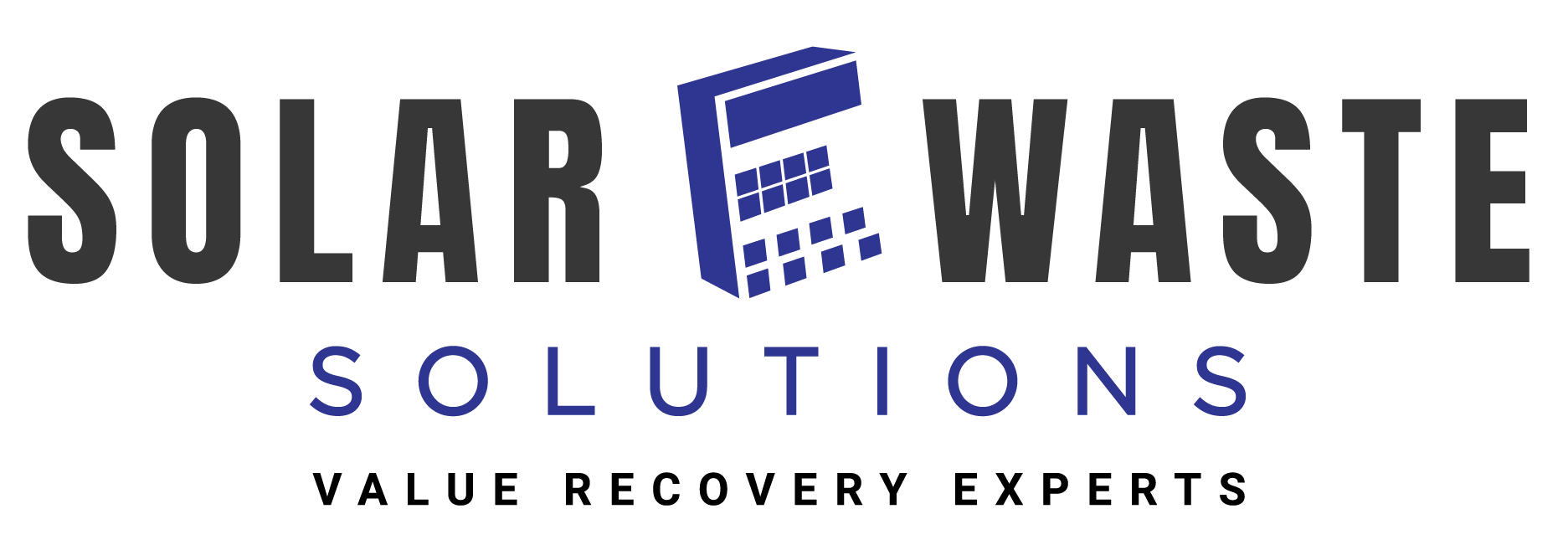FAQ
Value Recovery Experts
PV Recycling Questions
Below are answers to common PV recycling questions. If you can't find the answer you need, contact us. To suggest a new question, send us a message.
Is the recovery process for end-of-life solar panels cost-effective?
Yes, the recovery process is profitable. Recovering and recycling materials such as silver, aluminum, and silicon provides economic profit, allowing us to charge lower prices.
What is the leading environmental concern associated with PV waste?
Most PV waste contains hazardous materials like lead and cadmium and can have significant environmental and human health impacts if not properly managed. In the long run, there is a risk of being held accountable for creating a Superfund site. If you recycle with companies that do not have documented processes, who send contaminated materials to the landfill or stockpile them, there is a risk of future financial accountability. Knowing who your recycler is and vetting their process will keep you safe from these risks.
Why is there a need for best practices in managing PV waste now?
Although the second large-scale end-of-life PV waste volume is expected in 20-40 years, current waste from damaged or upgraded solar modules is already accumulating, requiring immediate and proper management practices now.
What criteria determine if PV waste is classified as hazardous?
PV waste is considered hazardous if it meets three conditions: it must be a waste, a representative sample exceeds hazardous waste thresholds, and it no longer serves its intended purpose.
Can used solar modules be exempt from hazardous waste regulations?
What are the environmental challenges associated with solar module recycling?
What is "speculative accumulation," and why is it a concern in solar module recycling?
Speculative accumulation refers to the storage of waste materials without timely recycling, which can lead to regulatory issues. To avoid this, recyclers must process at least 75% of received materials annually, as the EPA requires.
Why is it important to manage solar module waste properly?
Proper management is crucial due to the potential presence of toxic metals like lead, tin, and cadmium in solar modules. Improper disposal can lead to environmental contamination and legal liability, as the company responsible for the waste can be held accountable throughout the waste’s lifecycle.
How does the improper disposal of solar modules pose a risk?
Improper disposal in landfills not equipped to handle PV waste can lead to toxic materials leaching into the ground and water, potentially harming nearby communities. Additionally, the companies that generate the waste can be liable for contamination under laws like RCRA and CERCLA.
What is the purpose of the ASTM E3325 standard?
The ASTM E3325 standard provides a methodology for preparing and sampling solar photovoltaic (PV) modules for toxicity testing, specifically for use with the EPA’s Toxicity Characteristic Leaching Procedure (TCLP).
What are the potential consequences of selling or donating used solar panels?
If sold or donated panels are not properly tested for functionality, they can be classified as waste, which may have superfund implications if not properly disposed of. There is also a risk that damaged panels could lead to legal and environmental issues.
What steps should an organization take to manage used solar components?
Organizations should develop a comprehensive plan that includes proper packaging, careful handling to prevent damage, and selecting a reliable vendor for recycling or reuse. This plan should also include verification of the vendor’s compliance with regulations and appropriate insurance coverage for potential environmental liabilities.
Is there a current market for second-hand solar panels, for both purchase and installation?
Yes, there is a market for second-hand panels both for purchase and installation. However, there are some issues with this question. PV panels manufactured about 10-15 years ago were generally made to one version of the electrical standards (~600 or 800 volts), and now the standards are much higher voltages. This makes used equipment difficult to match with newer equipment in some cases. Typically, a new grid-tied installation will need to be to the current UL standard (in the US), which would require 1000 or 1500-volt ratings on all equipment. That could make installing used equipment something that building officials cannot permit.
Is there a deterioration in solar panel performance after removal/installation?
The most serious deterioration of solar modules comes from handling them; mishandling can cause micro-cracking in the cells, which can only be seen by performing significant testing with a machine that retails around half a million dollars. Having highly trained crews for what looks like a general labor project has cut down the incidental breakage from handling by 30%.
Can used solar panels be refurbished to compete with newer technology?
Refurbishment of panels consists mostly of cleaning and testing them, not adding anything. There are very few repairs that can happen to a solar module in any case, as the cells and wiring are bound inside the encapsulate and unable to be modified. To increase the power of a module, one would need to open the solar panel and change the cells with higher power cells, which is highly unlikely in any case.
We'd love to hear from you
